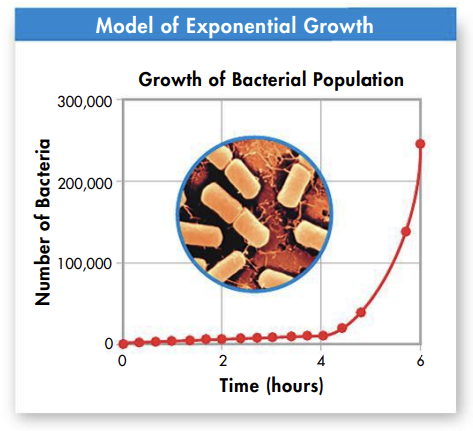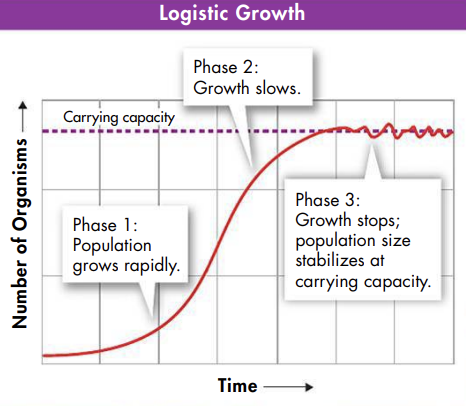Chapter 5: Populations
5.1 How Populations Grow
Describing Populations
- @@Ecologists study a population’s range, density, growth rate, and age structure@@
- A population’s geographic range describes the spaces where it lives; different populations can have very different ranges
- Population density is the number of individuals of a species per unit area
- Population distribution describes how the organisms are spread across their range; the distribution of a population may be random, uniform, or clumped
- A population’s growth rate tells you if the population size is getting bigger, smaller, or staying the same
- The age structure of a population describes the number of males and females of each age in the population
Population Growth
- A population may grow if more individuals are born than die in any period of time, making the birthrate is higher than the death rate
- If the death rate is higher, the population may shrink
- If these rates are about the same, the population may stay the same size
- When individuals move into a population’s range, the process is called immigration; alternatively, when individuals move out of the range, it is called emigration
- If immigration rates are higher than emigration rates, the population will grow
Exponential Growth
@@Exponential growth@@ @@is a growth pattern in which the individuals in a population reproduce at a constant rate@@
When there are plenty of resources and few predators or diseases, populations will grow exponentially
- In exponential growth, the larger a population gets, the more quickly it grows
- When you graph the growth, the graph is in the shape of a “J”

Exponential growth occurs in nature when a species is moved into a new habitat
Logistic Growth
In the @@second phase@@ of growth, population growth slows down as resources become limited
- When a population’s growth slows down and stops, it is called logistic growth
- A logistic growth curve is shaped like an “S”

In the @@third phase@@ of growth, the growth rate drops to zero and the population size stabilizes at carrying capacity (the largest number of individuals that an area can support)
5.2 Limits to Growth
Limiting Factors
- A limiting factor is any factor that controls the size of a population
- Limiting factors include competition for resources, predation, parasitism and disease, unusual weather, and natural disasters
- A density-dependent limiting factor is a limiting factor that depends on population density
- The relationship between predators and prey is an important density-dependent factor
- Ex: when people kill too many cod fish, the cod population falls; if people killed fewer cod, the population could rise again
- Competition depends on population density
- Predators, herbivores, parasites, diseases, and stress can affect crowded populations more
- A density-independent limiting factor is a limiting factor that affects all populations in similar ways, regardless of population size
- Unusual weather and natural disasters can act as density-independent limiting factors
5.3 Human Population Growth
Historical Overview
- Prior to the Industrial Revolution in the 1800s, the population grew slowly; as technological advances lowered death rates, the global population began to increase much more quickly
- Because of these improvements, death rates dropped, but the birthrate stayed very high, resulting in exponential growth of the human population
Patterns of Human Population Growth
- The world population growth rate has slowed a lot recently
- @@Birth rates, death rates, and age structure@@ differ among countries and cause some countries to have high growth rates and others to have low growth rates
- The scientific study of human populations is called demography
- Demography looks at characteristics of human populations and tries to explain how those populations will change over time
- In the demographic transition, a population changes from having high birth rates and death rates to having low birth rates and death rates
- In Stage 1 of the demographic transition, birth rates and death rates are equally high
- In Stage 2 of the demographic transition, the death rate begins to fall thanks to advances in nutrition, sanitation, and medicine, but birth rates remain high for a time
- In Stage 3 of the demographic transition, as living standards rise, families have fewer children and the birthrate falls to meet the death rate
- @@The demographic transition is complete when the birthrate meets the death rate@@